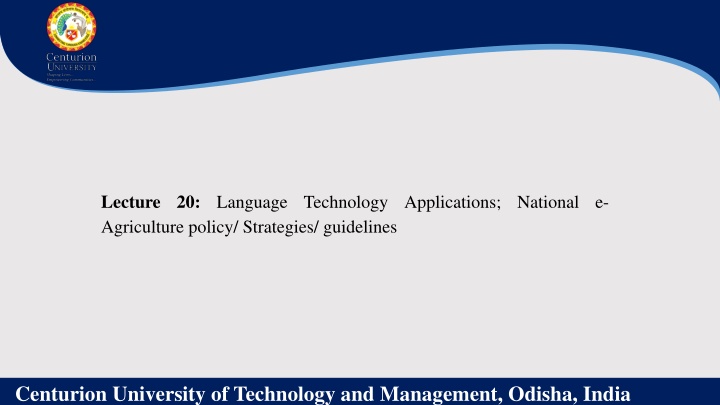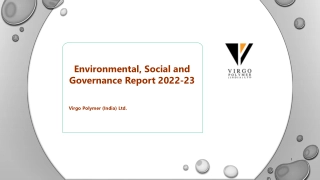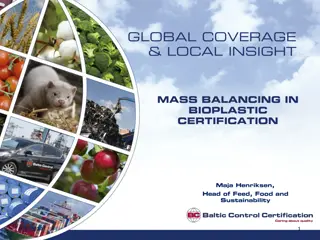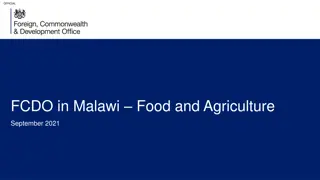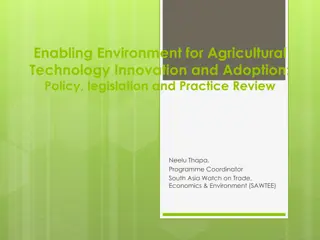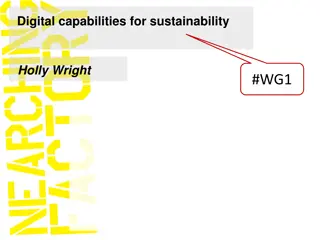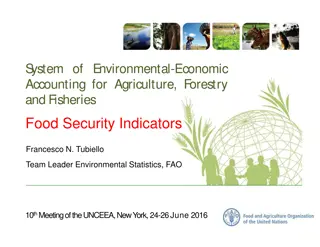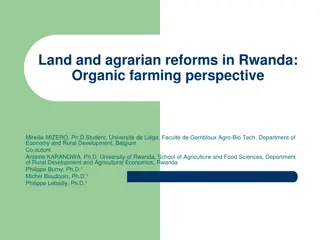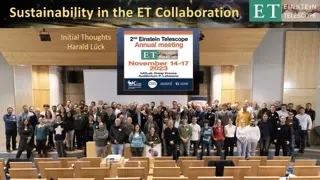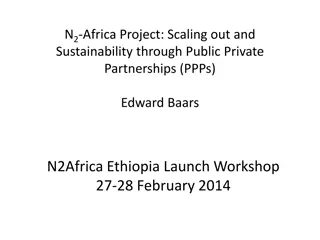Language Technology Applications in Agriculture: Enhancing Efficiency and Sustainability
Language technology, such as natural language processing and machine learning, is revolutionizing agriculture by enabling precision farming, crop monitoring, disease detection, knowledge management, advisory systems, and market analysis. Through the application of NLP techniques, farmers can make data-driven decisions to improve productivity and make informed choices. The National e-Agriculture policy in India focuses on leveraging ICTs to enhance agricultural productivity, sustainability, and resilience.
Download Presentation

Please find below an Image/Link to download the presentation.
The content on the website is provided AS IS for your information and personal use only. It may not be sold, licensed, or shared on other websites without obtaining consent from the author.If you encounter any issues during the download, it is possible that the publisher has removed the file from their server.
You are allowed to download the files provided on this website for personal or commercial use, subject to the condition that they are used lawfully. All files are the property of their respective owners.
The content on the website is provided AS IS for your information and personal use only. It may not be sold, licensed, or shared on other websites without obtaining consent from the author.
E N D
Presentation Transcript
Lecture 20: Language Technology Applications; National e- Agriculture policy/ Strategies/ guidelines Centurion University of Technology and Management, Odisha, India
Language Technology Applications Language technology, including natural language processing (NLP) and machine learning, can be applied to various areas of agriculture to improve efficiency, productivity, and decision-making. Here are some applications of language technology in agriculture: 1.Precision Agriculture: Language technology can be used to analyze textual data from various sources such as weather reports, satellite imagery, and soil sensors. By applying NLP techniques, farmers can gain insights into weather patterns, soil conditions, crop health, and pest infestations. This information helps optimize irrigation, fertilization, and pest control strategies, leading to more precise and sustainable farming practices. 2.Crop Monitoring and Disease Detection: By analyzing text-based data from multiple sources such as scientific articles, agricultural journals, and online forums, language technology can aid in monitoring crops and detecting diseases early. It can identify patterns, symptoms, and risk factors associated with crop diseases, allowing farmers to take timely preventive measures and minimize crop losses. Centurion University of Technology and Management, Odisha, India
3.Agricultural Knowledge Management: Language technology can help organize and manage vast amounts of agricultural knowledge available in the form of research papers, reports, and online resources. Through text mining and information retrieval techniques, relevant information can be extracted and made accessible to farmers and researchers, facilitating knowledge sharing, innovation, and evidence-based decision-making. 4.Agricultural Advisory Systems: Language technology can power intelligent advisory systems that provide personalized recommendations to farmers. By analyzing data from weather forecasts, soil data, and historical crop performance, these systems can offer tailored advice on planting schedules, crop selection, fertilizer application, and pest control. 5.Market Analysis and Price Prediction: Textual data from market reports, news articles, and social media can be analyzed using NLP techniques to gain insights into market trends, consumer preferences, and price fluctuations. Language technology can help farmers and agribusinesses make informed decisions about crop selection, pricing, and market strategies. Centurion University of Technology and Management, Odisha, India
National e-Agriculture policy The National e-Governance Plan in Agriculture (NeGPA) is a national policy on e-governance in agriculture in India. The plan was launched in 2010-11 with the goal of using ICTs to improve agricultural productivity, sustainability, and resilience. The NeGPA has four key objectives: To improve access to agricultural information: The NeGPA aims to improve access to agricultural information for farmers, agricultural professionals, and other stakeholders. To provide online services to farmers: The NeGPA aims to provide online services to farmers, such as land records, crop insurance, and market information. To promote e-commerce in agriculture: The NeGPA aims to promote e-commerce in agriculture by providing farmers with access to online markets. To strengthen the agricultural information infrastructure: The NeGPA aims to strengthen the agricultural information infrastructure by developing and maintaining databases, and by providing training to agricultural professionals. Centurion University of Technology and Management, Odisha, India
National e-Agriculture Strategy The NeAG cover a wide range of topics, including: The vision and objectives of e-Agriculture in India: The guidelines outline the vision for e-Agriculture in India, which is to use ICTs to improve agricultural productivity, sustainability, and resilience. The guidelines also outline the objectives of e-Agriculture, which include improving access to agricultural information, providing online services to farmers, and promoting e-commerce in agriculture. The principles of e-Agriculture: o Farmer-centricity: E-Agriculture initiatives should be farmer-centric, meaning that they should be designed to meet the needs of farmers. o Sustainability: E-Agriculture initiatives should be sustainable, meaning that they should be able to be sustained over the long term. o Inclusiveness: E-Agriculture initiatives should be inclusive, meaning that they should be accessible to all farmers, regardless of their location or socioeconomic status. Centurion University of Technology and Management, Odisha, India
Other guidelines include Increased efficiency: E-Agriculture initiatives that follow the NeAG are more likely to be efficient, as they are designed to meet the needs of farmers and are based on sound principles. Improved sustainability: E-Agriculture initiatives that follow the NeAG are more likely to be sustainable, as they are designed to be accessible to all farmers and are based on sound practices. Increased inclusivity: E-Agriculture initiatives that follow the NeAG are more likely to be inclusive, as they are designed to be accessible to all farmers, regardless of their location or socioeconomic status. Centurion University of Technology and Management, Odisha, India
